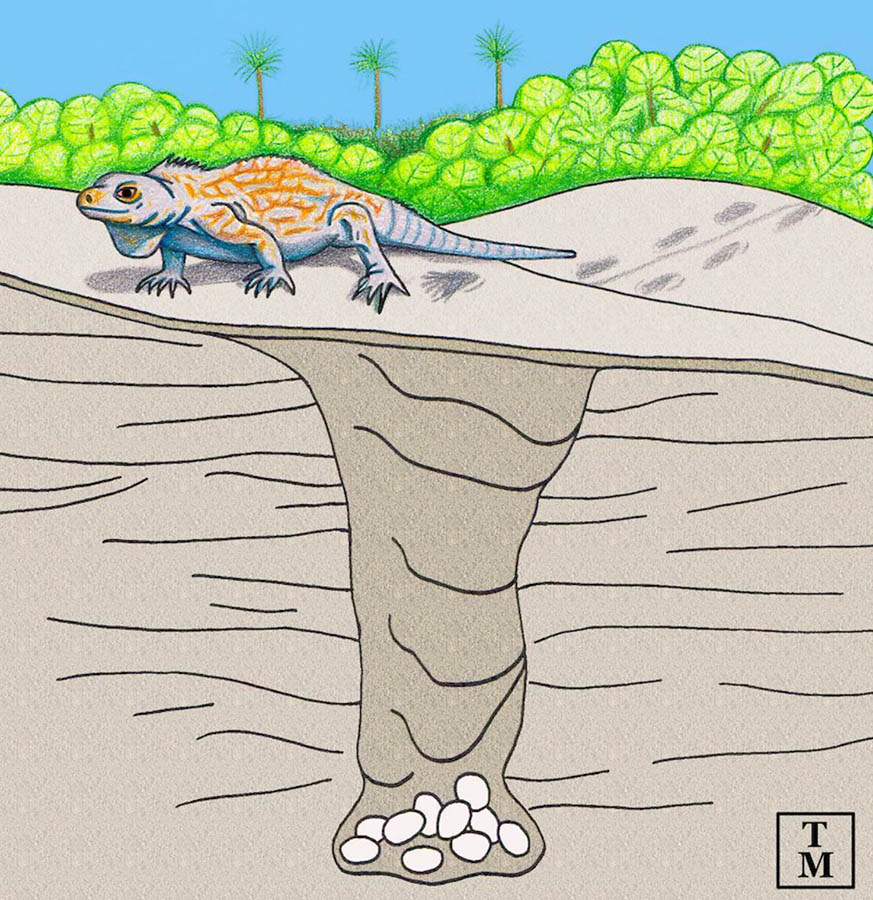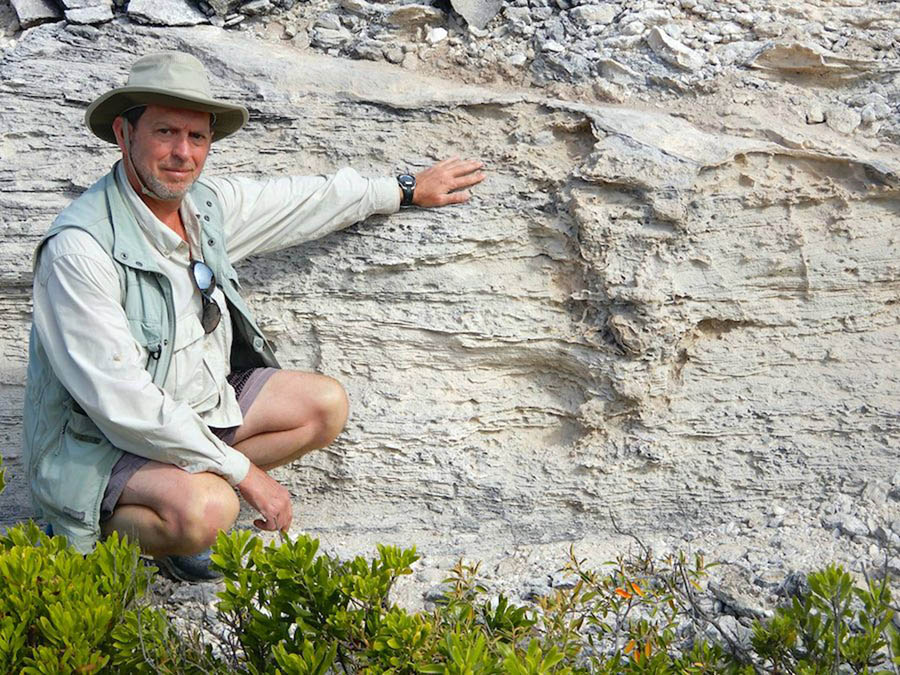115,000-Year-Old Iguana Nest Fossil Found on San Salvador Island

A trace fossil preserved in the Grotto Beach Formation on San Salvador Island, the Bahamas, is the first known fossil example of an iguana nesting burrow.
Iguanas are relatively large terrestrial lizards that are primarily native to Central America, South America, the Caribbean, and the Bahamas.
They can grow up to 1.8 m (6 feet) in length, including their tails. Despite their large size, formidable claws and fierce-looking spikes arrayed on their backs, iguanas are mostly herbivores.
The fossil record for iguanas goes back to the Late Cretaceous period in South America.
Their skeletal remains are well represented in Paleogene, Neogene, and Quaternary rocks. However, their trace fossils, whether as tracks, burrows, coprolites, or additional sign, remain unreported.
“One of the cool things about iguanas is that they are survivors,” said Professor Anthony Martin, a paleontologist in the Department of Environmental Sciences at Emory University.
“And one of the main ways that they survive is through burrowing.”
“Digging burrows has helped them survive hurricanes, droughts and other bad things that might be in their environment, like most predators. But burrows are not as helpful when it comes to rats and pigs.”
During a stop on the shoreline road on the south end of San Salvador Island, Professor Martin and colleagues happened to notice an unusual trace fossil on the limestone outcrop.
After further investigation, they determined that the fossil they found was that of a nesting iguana burrow.
They also were able to date the fossil to about 115,000 years ago due to tell-tale red paleosols.

“San Salvador is one of the outer-most islands in the Bahamas chain and really isolated,” Professor Martin said.
“It’s a mystery how and when the modern-day San Salvadoran rock iguanas arrived there. Today, they are among the rarest lizards in the world, with only a few hundred of them left.”
The San Salvador rock iguana (Cyclura riyeli riyeli), a terrestrial and burrow-nesting subspecies of rock iguana, lives on modern-day San Salvador.
This and other rock iguanas were plentiful throughout the Bahamas before 1492, when European ships began introducing rats, pigs and other invasive species that feed on the lizards’ eggs.
The oldest iguana skeletons found on San Salvador only date back less than 12,000 years (Holocene epoch), so the discovery of the iguana trace burrow pushes their presence on the islands back significantly.
“We’re hoping researchers who study iguana evolution will be inspired by our paper to dig deeper into this question,” Professor Martin said.
The team’s paper was published in the journal PLoS ONE.
_____
A.J. Martin et al. 2020. First known trace fossil of a nesting iguana (Pleistocene), The Bahamas. PLoS ONE 15 (12): e0242935; doi: 10.1371/journal.pone.0242935
Source: www.sci-news.com/








